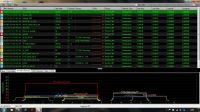Hello, as I do not have access to my router because it is in the so-called the lease of any changes is made remotely by the internet service provider. Using the wifi analyzer (android) and inSSIDer (PC) applications, I have set channel 6 + 2. I asked the service provider to change the channel to 13. Confirmed the change to the indicated channel 13 but in both applications for checking wifi there is still a 6 + 2 channel. The Android app suggests the best 9 + 13 channels; 13 + 9; 8 + 12. What's the deal with these channels, i.e. what is the difference between channel 13 and 13 + 9? Has the service provider set channel 13 and the programs show 6 + 2.




